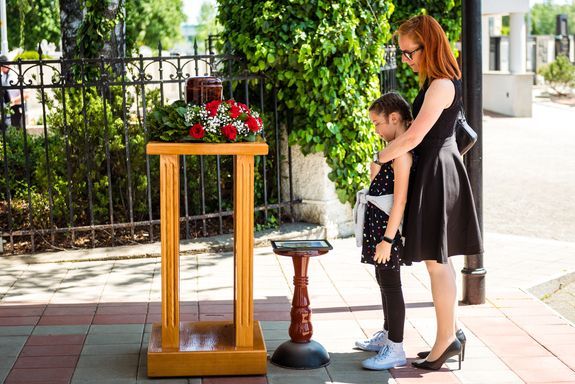A Brief History of Direct Cremation
In some parts of the world, cremations have been around as long as disposition itself. Relatively speaking, direct cremation is a newer practice, but that doesn’t make it “new.” It’s been almost 140 years since the first direct cremation was performed, and the process has only been perfected in the decades since.
Today, direct cremation is poised to become the nation’s most popular form of disposition, for many reasons. And the future is even brighter, as families in North America, Europe and beyond are establishing direct cremation as a top option for disposition services.
Cremation: A Practice That Spans Millennia
As a cultural practice, cremation is so old that there isn’t a firm idea of when it began. Archaeologists agree that it’s been around for more than 17,000 years, as cremains dating back that far were discovered in Australia.
Peoples in Asia embraced cremation early on, and there is evidence of cremated bodies in China dating back to 8000 BC. Part of Asia’s widespread adoption of cremation has to do with Buddhism, which spread throughout east and southeast Asia about 2,500 years ago. Buddhism considers cremation to be the ideal way to handle death, believing the spirit to be freed from the imperfect body during the cremation process.
In Europe, though, cremation emerged in isolated pockets. There is evidence that the practice was observed by ancient Greeks back in 3000 BC, specifically on the Cyclades islands. There is also evidence that cremation was a standard rite for tribes living in south and southeastern Europe – dating back to about 2000 BC.
Although cremation had a foothold in many parts of ancient Europe, it was never able to become the dominant disposition choice over burial. And this continent-wide trend was cemented once Christianity spread through the region.
The Rise of Christianity and the Fall of Cremation in Europe
During the Middle Ages – and well into the modern era – Christianity was largely opposed to cremation as a cultural practice. This resistance was due to Christianity’s belief that the body was resurrected following death. In fact, cremation was punishable by death throughout the Middle Ages. Even in areas where cremation did become common – such as the Scandinavian countries – it virtually disappeared with the emergence of Christianity.
During the Renaissance, though, additional Christian sects – Protestants foremost among them – offered alternative interpretations of Biblical text. Some of these alternative interpretations allowed for cremation, but it wouldn’t be until 1963 that Catholicism lifted its ban on the practice. While burial remains the preferred disposition choice, cremation is now acceptable by most western Christian churches. The story is different for members of the Orthodox Church, as Orthodox Christianity still rejects cremation as an acceptable form of disposition.
Public Health Brings Cremation Back to the Fore
Cremation remained on the cultural fringes in Europe until the mid-19th century. The reason for its re-emergence was public health, as European doctors believed that cremation offered a safer, healthier way to handle the deceased.
This idea was driven by two factors. One, improving furnace technology made efficient, safe cremation possible. Two, the miasma theory of disease was still the most accepted theory of disease among European researchers. The germ theory of disease wouldn’t take hold until the end of the 19th century.
The miasma theory of disease held that sickness was caused by foul air. This air (sometimes referred to as “night air”) was believed to be caused by small particles of decaying organic matter. This decayed material would enter the body through inhalation and cause illness.
Cremation was championed as a way to halt the spread of miasma, so European medical professionals brought the practice back into the public consciousness.
Direct Cremation Emerges as a Popular Alternative to Traditional Funerals
By the middle of the 19th century, small crematoriums were slowly popping up in Europe and beginning to take bodies for cremation. Most notable among these was the Woking Crematorium, which was the first crematorium purpose-built for human disposition in England. While the Woking facility itself was in service for burials starting in 1849, it wasn’t until 1878 that it began cremating human remains.
On March 26, 1885, the first official direct cremation in England was performed at the Woking Crematorium. The deceased was Jeannette Pickersgill, a painter and writer whose cremation was performed without a traditional memorial service and funeral.
You might say Ms. Pickersgill was a cremation trendsetter, as cremation services – including direct cremation – would grow in popularity with every year.
Today, Direct Cremation is Making New History as a Leading Disposition Choice
Cremation is now the leading choice for disposition for U.S. residents. According to the National Funeral Directors Association (NFDA), 56 percent of people who died in 2020 were cremated – an exclamation point on a long-running trend.
And the NFDA found that in 2022, more than 40 percent of people who chose cremation chose
direct cremation for their disposition. That’s the highest rate that the NFDA has ever recorded for direct cremation, so it’s likely that direct cremation will be making history for a long time yet.





